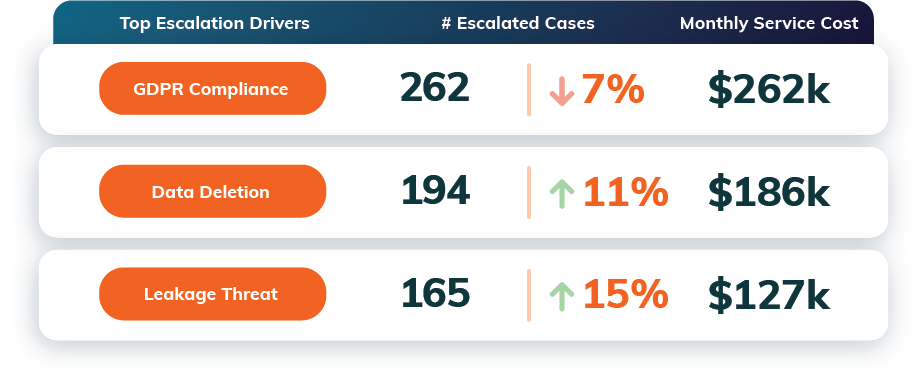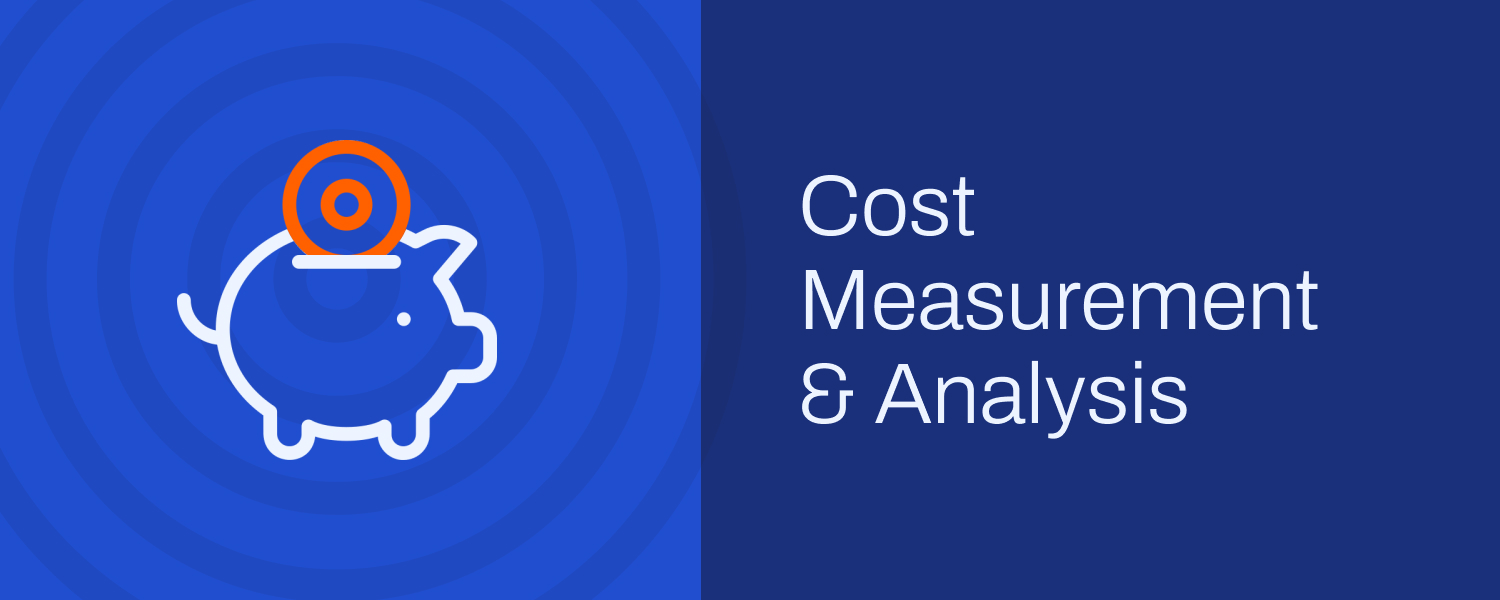Every day, your agents work really hard to solve customer problems thoughtfully and efficiently. Right now, there’s a good chance that several agents are feeling the weight of a pending escalation — the “customer X is typing a message…” call-out in the chat window is looming large as they scramble to deliver a better solution.
Another escalation. Your crestfallen agent dusts themself off and prepares for the next case as your tier 2 agents brace for impact.
It’s not just your agents who feel the burn of escalations — KPIs like CSAT and customer effort scores suffer as customers grow tired of inefficient processes. They skyrocket your cost of service, too, as escalations cost up to 70% more than other cases.
With increasing customer expectations, increasing case volumes, and an ever-changing mixed bag of complexity, achieving a 100% first contact resolution rate is a near-impossible task. Escalations are part of life in Support. But they don’t have to throw your team and your KPIs into a tailspin.
Some good news: with the right tools, you can optimize your triage process to reduce escalations and negative impacts when they inevitably occur. Gartner says that by 2025, customer service organizations using AI-enabled automation will achieve 90% first contact resolution, up from 50% in 2021. This means happier customers and a happier team.
Here are three ways to improve your triage process.
1. Identify root causes
Since history has a habit of repeating itself, it can be incredibly valuable to understand the root causes of your escalated cases. Identifying the biggest contributing factors to your escalation rate illuminates the path to fewer escalations and a higher first contact resolution rate.
Factors might include process redundancies — perhaps customers are being asked to restate information which frustrates them and inclines them to speak to a manager. Maybe your product documentation is unclear and confusing your customers. Or there’s a bug lurking and throwing a wrench into how customers expect your product to perform.
It could be any number of things or a combination of several known and unknown issues. But whatever is causing escalations, it’s critical that you put your finger on it so that you can stop them right in their tracks (or at least prevent a lot of them and make the others less painful…)
You might have a tagging system that can help facilitate root cause analysis by organizing cases by topic. One way to efficiently perform root cause analyses is to supplement manual agent tagging with automated product and feature tagging using natural language AI. This will help you develop a rich, clear picture of what’s driving escalations much faster and with more accuracy than you otherwise would be able to. Additionally, this means your agents can give customers 100% of their attention instead of spending time deciding which tag they should apply.
Using natural language AI, you can also automatically measure customer sentiment over the life of a case. Monitoring customer sentiment can help you pinpoint moments in interactions where things might have gone south so you can precisely understand what the last straw was.
Additionally, while your queue may see some very common types of escalations, most businesses have a unique set of urgency indicators that are highly correlated with escalation.
For example, privacy concerns might be escalated if you’re an advertising platform. Fraud concerns might top your list if you’re a financial services platform. If you’re an event marketing software, issues about event invites not getting sent may be most likely to trigger escalation.
 Designing an escalation process with these factors in mind can help you address these hot-button issues for your customers more efficiently without overburdening your team. Natural language AI can help you monitor cases for custom signals that you can use to automatically route to a team with the expertise to solve the issue in one shot.
Designing an escalation process with these factors in mind can help you address these hot-button issues for your customers more efficiently without overburdening your team. Natural language AI can help you monitor cases for custom signals that you can use to automatically route to a team with the expertise to solve the issue in one shot.
2. Predict future escalations by pattern-matching top causes against incoming cases
Now that you have a good sense of what’s causing escalations, you can use that information to predict future escalations by pattern-matching top escalation causes against incoming cases. There are two primary types of escalations and with the right AI tools, you can predict them both. A functional escalation is when a support case gets re-assigned to another agent or someone on another team who has the right expertise to solve the customer’s problem. A hierarchical escalation is when a case is transferred to someone else based on their experience level or seniority.
Let’s pretend you work for that advertising platform we mentioned earlier. You’ve established that cases where customers express privacy or regulatory concerns tend to get escalated —after all, if your customer is concerned about these matters, there’s a chance they are urgently worried about whether they are at risk of breaking a law, getting fired, and/or inviting a PR disaster for their company.
 First, they are probably not feeling that their concern can wait. Secondly, unless your agents are well-trained in compliance matters, your customers will need expertise that thoroughly understands the nuances of the situation.
First, they are probably not feeling that their concern can wait. Secondly, unless your agents are well-trained in compliance matters, your customers will need expertise that thoroughly understands the nuances of the situation.
Predicting functional escalations and getting the right eyes on these cases fast also eliminates cross-functional tension. Your agents no longer have to bear the burden of getting compliance to pay attention.
Of course, operational factors like long wait times can also drive escalations. You can also predict escalations based on how long cases have been waiting in your queue. For customers that have SLAs, you can probably predict that as the SLA approaches and / or you exceed it, that those cases will be escalated. Predicting the escalation allows you to get ahead of customer expectations by either allowing those cases to jump to the front of your queue or routing them directly to a pre-emptively apologetic manager.
3. Stop playing “hot potato” with cases
“Please hold while I transfer you” may be one of the most universally despised phrases.
Unfortunately, as long as many Support teams continue to rely on fragile, rigid routing protocols, it’s here to stay.
Many Support teams have tiered coverage across multiple time zones that govern where cases “land” when they get opened. But as we’ve noted, some cases also require different agent skill sets — and this becomesproblematic when routing is left to chance.
Maybe one agent wants a certain case because it’s easy and she’s been working on complex issues all day. Maybe another agent wants to avoid it because he’s feeling the sting of a few bad CSATs from earlier in the day. Maybe another agent wants it because she’s worked very few (but LONG) cases today and needs to show her manager more output. Or nobody wants it.
There’s a laundry list of reasons that a case can become a hot potato tossed around your team….and why case assignment shouldn’t be left to any single individual’s in-the-moment judgment.
As a means of routing cases more efficiently, many Support organizations will ask customers to categorize their issue by topic or severity using a dropdown menu. The intention makes a lot of sense. Theoretically, this helps you avoid both functional and hierarchical escalations — you avoid functional escalations by identifying the subject matter upfront and also avoid hierarchical escalations by routing cases directly to managers with the authority to address a severe issue.
But in practice, depending on customers to categorize their cases can do more harm than good. First, ask yourself, do your customers have the same expert knowledge of common product issues as your agents? If the answer is no, then you’ll probably see a lot of incorrect categorizations that might end up increasing your functional escalations.
Now, put yourself in the shoes of your customer who has been asked to rate the severity of their issue. It’s unlikely that this customer has taken time out of their busy day to let you know about something that they don’t think is important. Is their idea of a critical emergency the same as yours? Probably not. Now imagine digging out from behind a bunch of cases about routine issues that were labeled as emergencies.
Skills-based routing using natural language AI is similarly intended to help avoid both functional and hierarchical escalations by capturing the subject matter and severity of incoming cases on arrival. But instead of asking your customers to do the categorization, natural language AI does it for you. This accelerates the routing process and removes subjectivity —it means you can clearly distinguish one type of issue from the next, and automatically define different severity thresholds.
Skills-based routing using natural language AI means you and your team can stop playing hot potato and represents an incredibly powerful upgrade to your routing and triage processes.
While a 100% first contact resolution rate is unlikely, it’s very possible to significantly reduce the toll that escalations take on your team, your customer relationships, and your KPIs. Incorporating natural language AI into your triage and routing processes can alleviate headaches for your agents and your customers, resulting in a better customer experience and a lower cost of service.


